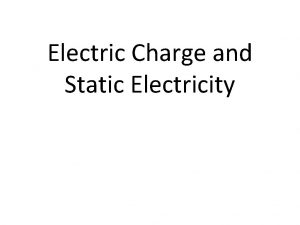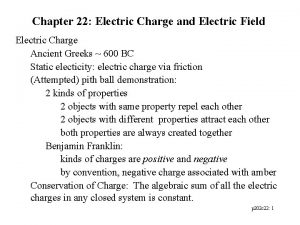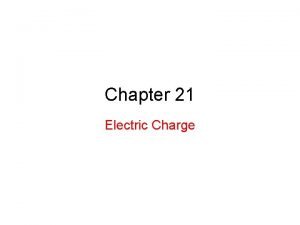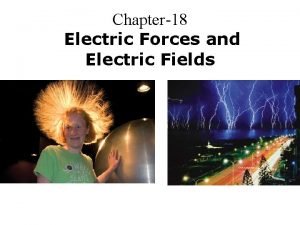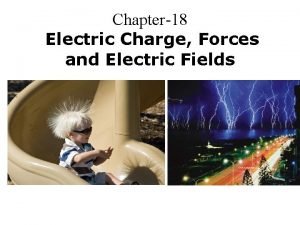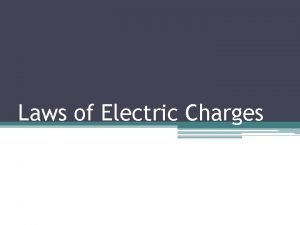Electric Charge Chapter 7 1 Charge Atoms are








- Slides: 8

Electric Charge Chapter 7. 1

Charge • Atoms are made up of: – Positive protons – Negative electrons – If the atom has same number of each, it is electrically neutral

Transferring charge • Electrons are bound more tightly to some atoms – When surfaces are in contact sometimes electrons can transfer between the objects • Accumulation of excess electric charge = static electricity Example: Rubbing the soles of your foot on the carpet transfers electrons to your foot

Conservation of Charge • Charge can be transferred from object to object, but it cannot be created or destroyed

Comparing Forces • Electrical forces > gravitational forces – For protons and electrons • In real life, two objects have a greater gravitational force than electrical force since most objects are neutral • Electrical force directly proportional to charge of objects and inversely proportional square to the distance

Conductors & Insulators • Conductors – Have electrons that are able to move easily • metals • Insulators – Have electrons that are not able to move easily • Wood, rubber, glass

Charging Objects • Charging by contact – Rubbing two materials together resulting in transfer of electrons – One material becomes positive the other negative

Charging by Induction • When charged objects get close to neutral objects, they can cause the neutral object to rearrange the position of its’ electrons – No initial contact required to attract the objects
 Antigentest åre
Antigentest åre Chapter 21 electric charge and electric field
Chapter 21 electric charge and electric field Chapter 21 electric charge and electric field
Chapter 21 electric charge and electric field Coulombs units
Coulombs units Chapter 21 electric charge and electric field
Chapter 21 electric charge and electric field Difference between charge and electric charge
Difference between charge and electric charge Difference between charge and electric charge
Difference between charge and electric charge Periodic table regents
Periodic table regents Chapter 6 section 1 electric charge worksheet answers
Chapter 6 section 1 electric charge worksheet answers










